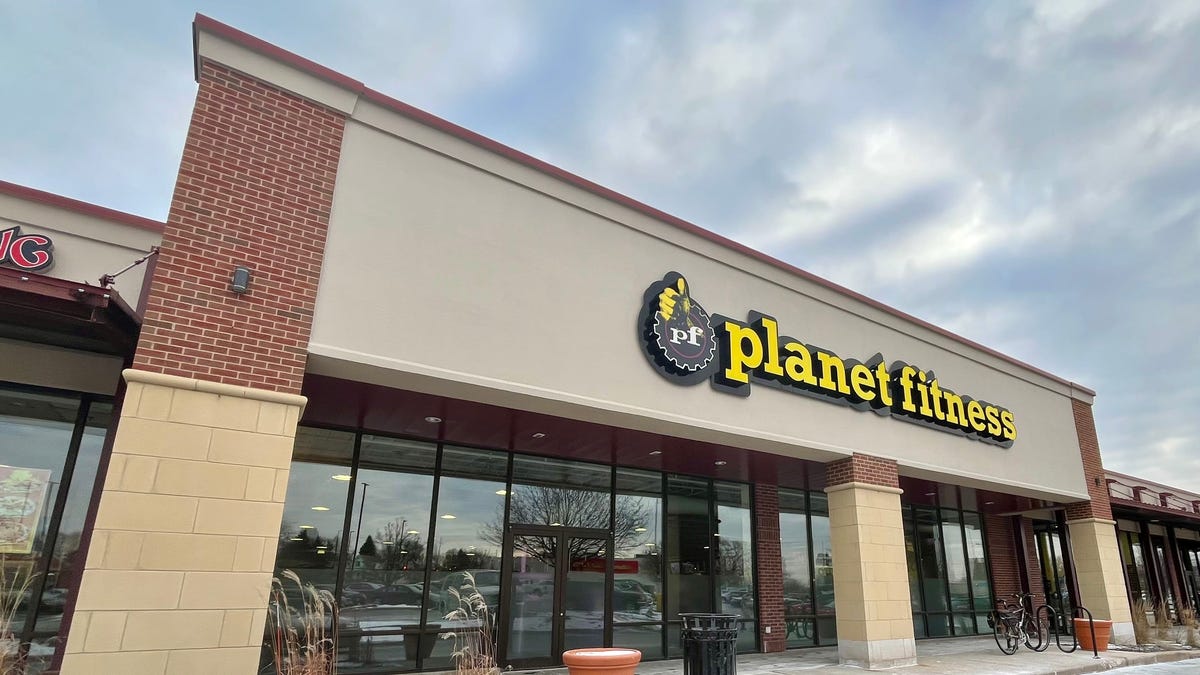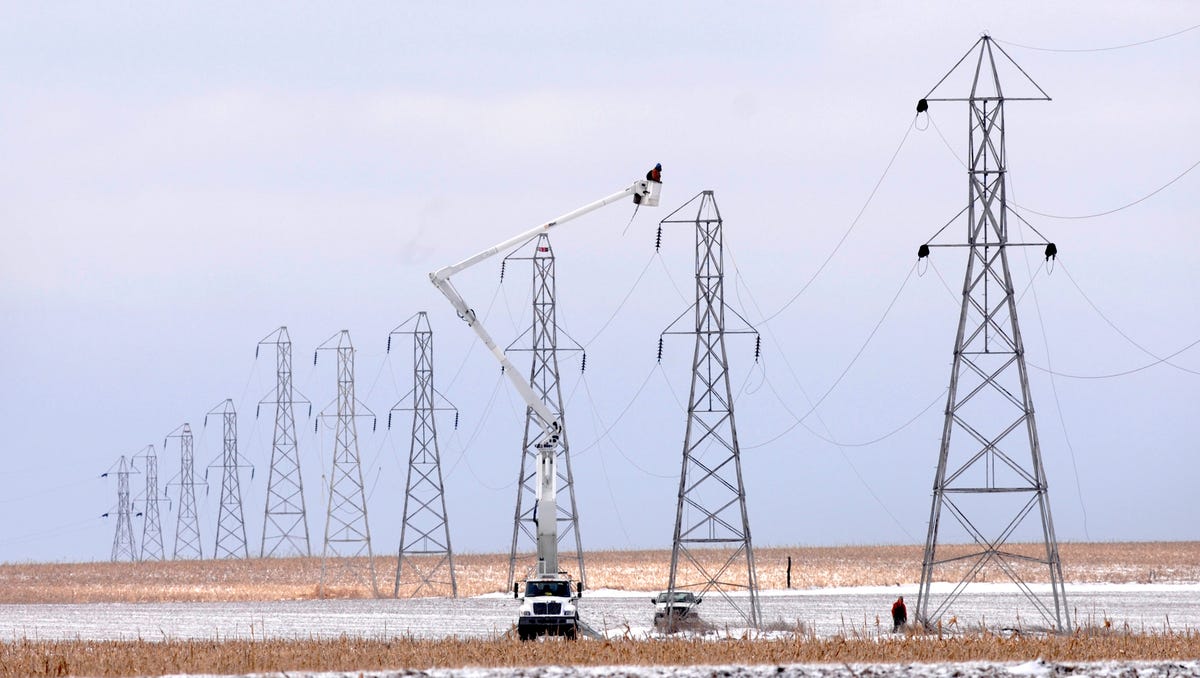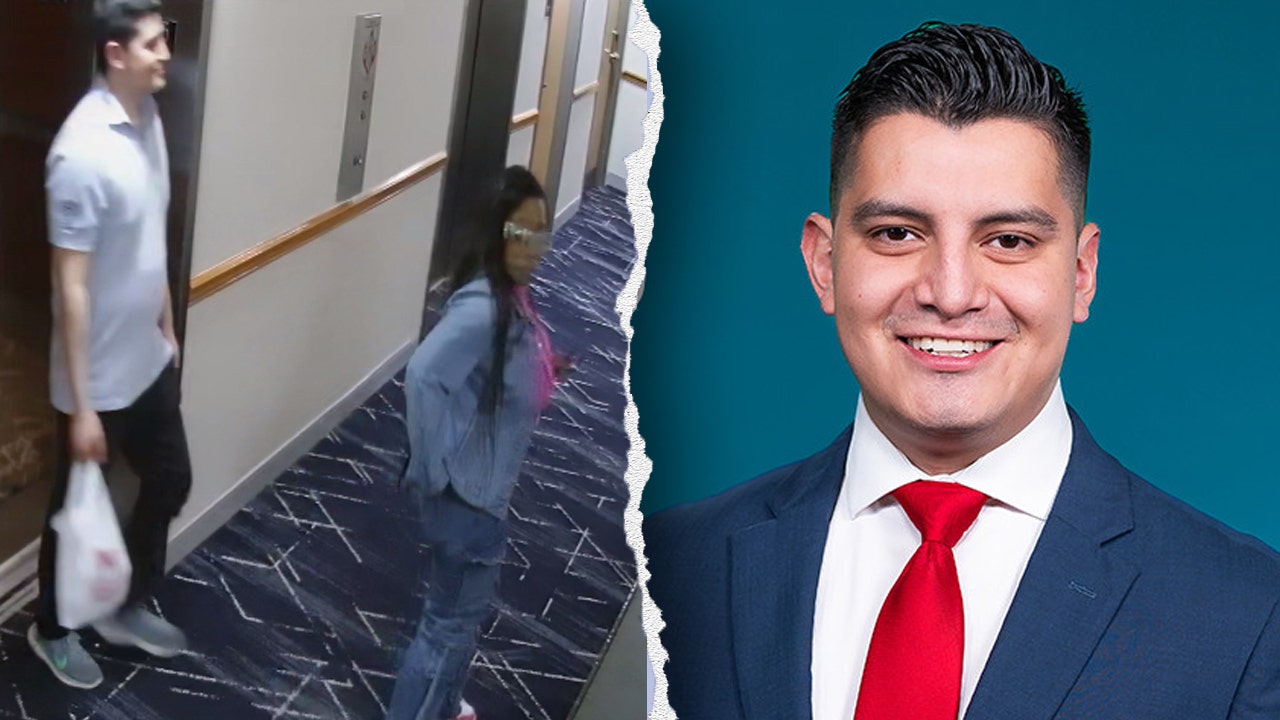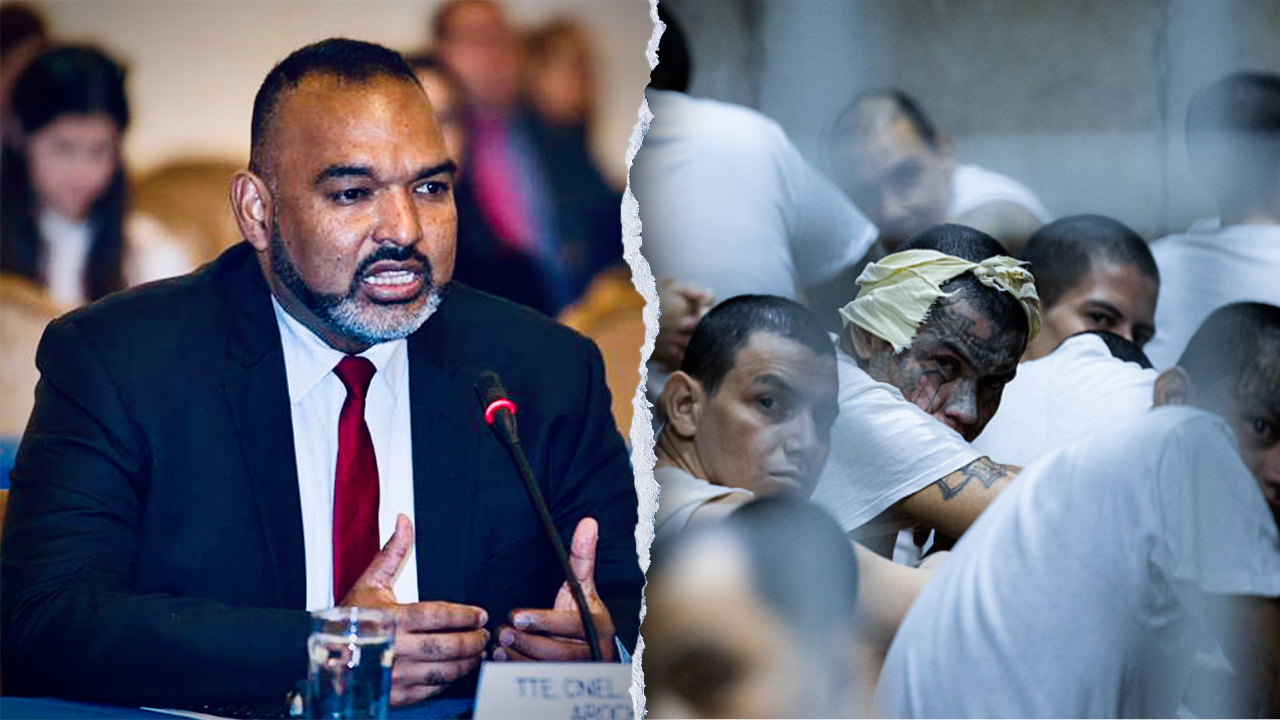Business
Chomps Recalls Beef and Turkey Sticks Over ‘Pieces of Metal’ Complaints

Nearly 30,000 pounds of ready-to-eat beef sticks were recalled on Thursday after consumers complained that they had found metal fragments in them, food safety and company officials said.
The voluntary recall affects Chomps Original Beef Sticks, but the company said in a statement posted online on Thursday and Friday that it was including Original Turkey sticks and additional product lots that were produced at Idaho Smokehouse Partners, based in Shelley, Idaho.
The Food Safety and Inspection Service, which is under the U.S. Department of Agriculture, said in a statement that the agency was informed of “two consumer complaints reporting that pieces of metal were found in the product.”
The products subject to the recall were packaged at a single facility from Jan. 16 through Jan. 23, according to Chomps. The Food Safety and Inspection Service said that the recalled items were shipped to retail locations in California and Illinois.
The company said the turkey products added to the recall were not included in the 29,541 pounds of recalled beef sticks reported by federal regulators, but it did not provide a weight for the additional items.
There have been no confirmed injuries from consuming the products, the Food Safety and Inspection Service said, adding that anyone who is concerned about an injury should contact a health care provider.
Consumers who purchased the recalled items are urged to throw them away or return them to the store.
Idaho Smokehouse Partners said in a statement on Saturday that after becoming “aware of the two complaints,” it “worked with regulatory authorities on the best way to protect consumers from this issue.”
“We are taking this action because we are committed to the highest food safety standards for the consumers of our products,” the company added.
Chomps said in a statement on Saturday that the decision to recall the items was “made following a thorough investigation conducted alongside our manufacturing partner” and under the oversight of the Agriculture Department.
The company said it “chose to broaden the scope of the recall beyond what was required, ensuring that all product packaged during that time frame was fully accounted for and removed from the market.”
Chomps also said that it had added “further safeguards to prevent this from happening again.”

Business
FCC commissioner sounds alarms about free speech 'chilling effect' under Trump

Federal Communications Commissioner Anna M. Gomez traveled to Los Angeles this week to sound an alarm that attacks on the media by President Trump and his lieutenants could fray the fabric of the 1st Amendment.
Gomez’s appearance Wednesday at Cal State L.A. was designed to take feedback from community members about the changed media atmosphere since Trump returned to office. The president initially expelled Associated Press journalists from the White House, for example. He signed an executive order demanding government funding be cut to PBS and NPR stations.
Should that order take effect, Pasadena-based radio station LAist would lose nearly $1.7 million — or about 4% of its annual budget, according to Alejandra Santamaria, chief executive of parent organization Southern California Public Radio.
“The point of all these actions is to chill speech,” Gomez told the small crowd. “We all need to understand what is happening and we need people to speak up and push back.”
Congress in the 1930s designed the FCC as an independent body, she said, rather than one beholden to the president.
But those lines have blurred. In the closing days of last fall’s presidential campaign, Trump sued CBS and “60 Minutes” over edits to an interview with then-Vice President Kamala Harris, alleging producers doctored the broadcast to enhance her election chances. CBS has denied the allegations and the raw footage showed Harris was accurately quoted.
Trump-appointed FCC Chairman Brendan Carr, upon taking office in January, revived three complaints of bias against ABC, NBC and CBS, including one alleging the “60 Minutes” edits had violated rules against news distortion. He demanded that CBS release the unedited footage.
The FCC’s review of Skydance Media’s pending takeover of CBS-parent Paramount Global has been clouded by the president’s $20-billion lawsuit against CBS. The president rejected Paramount’s offer to settle for $15 million, according to the Wall Street Journal, which said Trump has demanded more.
Two high-level CBS News executives involved in “60 Minutes” were forced out this spring.
Gomez, in an interview, declined to discuss the FCC’s review of the Skydance-Paramount deal beyond saying: “It would be entirely inappropriate to consider the complaint against the ’60 Minutes’ segment as part of a transaction review.” Scrutinizing edits to a national newscast “are not part of the public interest analysis that the commission does when it considers mergers and acquisitions,” she said.
For months, Gomez has been the lone voice of dissent at the FCC. Next month, she will become the sole Democrat on the panel.
The longtime communications attorney, who was appointed to the commission in 2023 by former President Biden, has openly challenged her colleague Carr and his policies that align with Trump’s directives. She maintains that some of Carr’s proposals, including opening investigations into diversity and inclusion policies at Walt Disney Co. and Comcast, go beyond the scope of the FCC, which is designed to regulate radio and TV stations and others that use the public airwaves.
The pressure campaign is working, Gomez said.
“When you see corporate parents of news providers … telling their broadcasters to tone down their criticisms of this administration, or to push out the executive producer of ’60 Minutes’ or the head of [CBS] News because of concerns about retribution from this administration because of corporate transactions — that is a chilling effect,” Gomez said.
Wednesday’s forum, organized by the nonprofit advocacy group Free Press, was punctuated with pleas from professors, journalists and community advocates for help in fending off Trump’s attacks. One journalist said she lost her job this spring at Voice of America after Trump took aim at the organization, which was founded more than 80 years ago to counter Nazi propaganda during World War II.
The Voice of America’s remaining staffers could receive reduction-in-force notices later this week, according to Politico.
Latino journalists spoke about the difficulty of covering some stories because people have been frightened into silence due to the administration’s immigration crackdown.
For now, journalists are able to carry out their missions “for the most part,” said Gabriel Lerner, editor emeritus of the Spanish-language La Opinión.
But he added a warning.
“Many think that America is so exceptional that you don’t have to do anything because fascism will never happen here,” Lerner said. “I compare that with those who dance on the Titanic thinking it will never sink.”
The White House pushed back on such narratives:
“President Trump is leading the most transparent administration in history. He regularly takes questions from the media, communicates directly to the public, and signed an Executive Order to protect free speech on his first day back in office,” spokesperson Anna Kelly said. “He will continue to fight against censorship while evaluating all federal spending to identify waste, fraud, and abuse.”
FCC Commission Chairman Brendan Carr on Capitol Hill.
(Alex Wroblewski / Bloomberg via Getty Images)
Traditionally, the five-member FCC has maintained an ideological balance with three commissioners from the party in power and two from the minority. But the senior Democrat — Geoffrey Starks — plans to step down next month, which will leave just three commissioners: Gomez, Carr and another Republican, Nathan Simington.
Trump has nominated a third Republican, Olivia Trusty, but the Senate has not confirmed her appointment.
Trump has not named a Democrat to replace Starks.
Some on Wednesday expressed concern that Gomez’s five-year tenure on the commission could be cut short. Trump has fired Democrats from other independent bodies, including the Federal Trade Commission and the Consumer Product Safety Commission.
Gomez said if she is pushed out, it would only be because she was doing her job, which she said was defending the Constitution.
Rep. Raul Ruiz (D-Indio) applauded Gomez’s efforts and noted that he’s long appreciated coordinating with her on more routine FCC matters, such as ensuring wider broadband internet access.
“But now the fight is the survival of the free press,” Ruiz said.
He noted that millions of people now get news from non-journalist sources, leading to a rise of misinformation and confusion.
“What is the truth?” Ruiz said. “How can we begin to have a debate? How can we begin to create policy on problems when we can’t even agree on what reality is?”
Business
Contributor: A Trump deregulator may set us up for a sequel to the 2008 crisis

The movie “The Big Short” — dramatizing the reckless behavior in the banking and mortgage industries that contributed to the 2008 financial crisis — captures much of Wall Street’s misconduct but overlooks a central player in the collapse: the federal government, specifically through Fannie Mae and Freddie Mac.
These two government-created and government-sponsored enterprises encouraged lenders to issue risky home loans by effectively making taxpayers co-sign the mortgages. This setup incentivized dangerous lending practices that inflated the housing bubble, eventually leading to catastrophic economic consequences.
Another critical but overlooked factor in the collapse was the Community Reinvestment Act. This federal law was intended to combat discriminatory lending practices but instead created substantial market distortions by pressuring banks to extend loans to borrowers who might otherwise have been deemed too risky. Under threat of regulatory penalties, banks significantly loosened lending standards — again, inflating the housing bubble.
After the bubble inevitably burst, Fannie and Freddie were placed under conservatorship by the Federal Housing Finance Agency. The conservatorship imposed rules aimed at preventing future taxpayer-funded bailouts and protecting the economy from government-fueled market distortions.
Now, President Trump’s appointee to lead that agency, Bill Pulte, is considering ending this conservatorship without addressing the core structural flaw that fueled the problem in the first place: implicit government guarantees backing all Fannie and Freddie mortgages. If Pulte proceeds without implementing real reform, taxpayers on Main Street are once again likely to be exposed to significant financial risks as they are conscripted into subsidizing lucrative deals for Wall Street.
Without genuine reform, the incentives and practices that led to the crisis remain unchanged, setting the stage for a repeat disaster.
Pulte’s proposal isn’t likely to unleash free-market policies. Instead, it could further rig the market in favor of hedge funds holding substantial stakes in Fannie and Freddie, allowing them to profit enormously from the potential upside, while leaving taxpayers to bear all the downside risks.
A meaningful solution requires Fannie and Freddie to significantly strengthen their capital reserves. The two government-sponsored enterprises still remain dangerously undercapitalized. A report from JP Morgan Chase describes it this way: “Despite steady growth in [their net worth], the GSEs remain well below the minimum regulatory capital framework requirements set by the Federal Housing Finance Agency in 2020.” Imposing robust capital requirements similar to those that govern private banks would oblige the two enterprises to internalize their risks, promoting genuine market discipline and accountability.
Further reforms should address transparency and oversight. Enhanced disclosure standards would allow investors, regulators and the public to better assess risks. Additionally, limiting the types of mortgages these entities can guarantee could reduce exposure to the riskiest loans, further protecting taxpayers. Implementing clear rules that prevent Fannie and Freddie from venturing into speculative financial products would also mitigate potential market distortions.
Critically, the federal government must clearly communicate that future bailouts are not an option. Explicitly removing government guarantees would compel Fannie and Freddie to operate responsibly, knowing that reckless behavior will lead to their insolvency, not to another taxpayer rescue. Clear legal separation from government backing is essential to prevent moral hazard.
The combination of government guarantees, regulatory pressure from policies such as the Community Reinvestment Act and inadequate capital standards created the perfect storm for the 2008 financial crisis. Ignoring these lessons and repeating past mistakes would inevitably lead to a similar disaster.
Proponents of prematurely releasing Fannie and Freddie argue that market conditions have changed and risk management has improved. Yet, history repeatedly demonstrates that without structural changes, financial entities — particularly those shielded by government guarantees — inevitably revert to risky behavior when market pressures and profit incentives align. Markets function best when participants bear the full consequences of their decisions, something impossible under the current structure of these government-sponsored enterprises.
Ultimately, the only responsible approach is removing taxpayers from the equation entirely. Fannie Mae and Freddie Mac should participate in the mortgage market only as fully private entities, without any implicit government guarantees.
The American public doesn’t need a sequel to “The Big Short.” The painful lessons of the 2008 crisis are too recent and too severe to be ignored or forgotten. Market discipline, fiscal responsibility and genuine reform — not government-backed risk-taking — must guide our approach going forward. We can only hope that the Trump administration chooses fiscal responsibility over risky experiments that history has already shown end in disaster.
Veronique de Rugy is a senior research fellow at the Mercatus Center at George Mason University. This article was produced in collaboration with Creators Syndicate.
Business
Palisades Village to reopen with Elyse Walker rebuilding flagship store

Elyse Walker made a bet in 1999: that residents of Pacific Palisades and Brentwood would rather shop for designer fashions in their neighborhood than drive to Beverly Hills.
Her eponymous boutique, initially just 800 square feet, became the cornerstone of a retail empire that now stretches from Tribeca to Newport Beach, drawing celebrities such as Jennifer Garner and Kate Hudson. It also propelled a renewal of downtown Palisades, with new restaurants and boutiques moving in.
That all changed on Jan. 7, when the Palisades fire leveled Walker’s flagship store and thousands of homes and other businesses.
A man rides a scooter past a burning business in Palisades Village on Jan. 8.
(Brian van der Brug / Los Angeles Times)
On Wednesday, Walker proudly announced her next bet on the neighborhood where she raised her two sons.
In downtown Palisades, she and developer Rick Caruso revealed that Caruso’s Palisades Village shopping center will reopen in mid-2026 and that her flagship store, elysewalker, will become its newest marquee tenant.
“I hope that this serves as the catalyst for other retailers and brands and big businesses and small businesses to come back to the Palisades, Malibu, Altadena and Pasadena,” Walker said in an interview. “Twenty-five years ago, we planted seeds in this community, and now we are doing it again.”
Caruso told The Times that later this year, he plans to resume the Palisades Village annual Christmas tree and menorah lighting. He said he will also underwrite the cost of new landscaping and sidewalks in the streets around the shopping center.
The goal, he said, is to create a visible anchor to a town in the midst of a massive recovery and to accelerate the return of a vibrant, bustling community.
“This is a really big deal,” Caruso said. “When a retailer like Elyse opens a store in a community, that’s a powerful voice of confidence that there’s a bright future here. I really do believe with her and our organization, the rebirth of the Palisades is going to be unstoppable.”
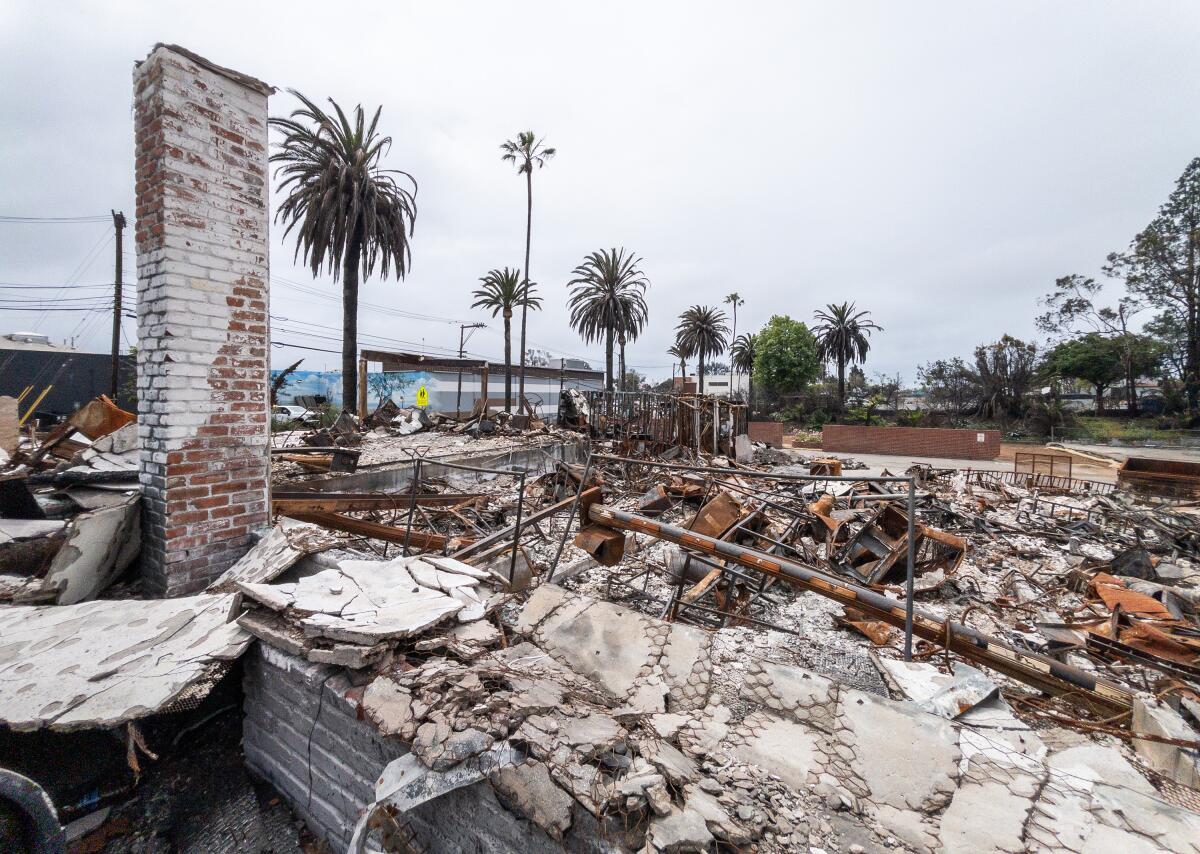
The location of Fashion designer Elyse Walker’s former flagship store in Pacific Palisades that was destroyed in the Palisades fire on Jan. 7.
(Myung J. Chun/Los Angeles Times)
The news came during a frustrating and uncertain period as Palisades residents recover from the devastation of the wildfire and grapple with the mass displacement of their community. Thousands have relocated to disparate parts of Southern California or are scattered across the U.S.
“The fact that we have this hub in the middle of town is a ray of hope that we can get back sooner,” said Chris Feil, a Palisades native who moved six times after the fire before settling in a rental in Manhattan Beach. His wife, Mia Feil, said she gets emotional thinking of what was lost in the blaze. The couple is now in the early stages of rebuilding.
“We’re all sort of traumatized by the loss of our community,” she said, listing the impromptu gathering at restaurants, Saturday baseball games, the annual Christmas tree lighting and the Fourth of July parade. “Having all those things back is truly the lifeline and joy in the neighborhood — that’s what makes the Palisades so special. It’s a small town in a big city.”
Walker chose to open her shop on Antioch Street more than 25 years ago so that she could easily walk to her sons’ school.
“We were between three churches, two coffee shops and five schools — it had nothing to do with co-tenancy yet,” Walker said. “We just knew this was a place where people would be walking around.”

Fashion designer Elyse Walker said she trusts Rick Caruso, right, as she announced the reopening of her flagship store at the Palisades Village on Wednesday.
(Myung J. Chun/Los Angeles Times)
Her shop drew well-heeled women from across the region, and she expanded the store’s footprint six times, reaching nearly 6,500 square feet. Her store generated $5,000 per square foot in sales — among the highest in American multi-brand retail. She developed a team of private shoppers and stylists that visited clients in their homes for curated fashions.
Along the way, Walker became an ambassador of sorts to would-be retailers and business owners in the Palisades, such as Cafe Vida, Lemon Nails and Caruso’s Palisades Village, which opened in 2018 and brought a movie theater, Erewhon and Chanel.
“People who live in the Palisades don’t want to leave. It’s a magical place — they nestle into the mountains right by the ocean,” Walker said.
On Jan. 7, Caruso relied on a fleet of private firefighters to prevent the flames from destroying Palisades Village and some nearby properties.
But Walker’s shop was reduced to rubble, the merchandise incinerated by the inferno.
The store had about 30 employees, and Walker said she has been in “sink or swim mode,” trying to keep her staff employed, serve local customers through her shops in Calabasas and Newport Beach and trudge through the arduous task of dealing with insurance.
“The first thing I said to my team: there’s no four walls that can define me, and there’s no four walls that define the magic,” she said.
She recalled the couples who met in the store, the women who learned they were pregnant there, and the local resident whose 3-year-old son had died and who needed a dress for the funeral.
“So much happened in the dressing room of that store, and none of that is gone — those relationships and friendships and trust are still there,” Walker said.
With Walker’s shop opening inside Palisades Village in the spring or summer of 2026, and with new trees, streetscapes and upgraded sidewalks coming to the downtown, Caruso said he hopes the area will be a cradle of redevelopment and a beacon for those vacillating about rebuilding.
“Hopefully, that spurs other landlords to invest in their buildings and spurs other retailers to open up,” he said. “We’re going to be roaring back and before you know it, it’s going to be full of families. These neighborhoods are going to flourish.”
-

 Education1 week ago
Education1 week agoVideo: Columbia University President Is Booed at Commencement Ceremony
-

 Technology1 week ago
Technology1 week agoAMD’s new RX 9060 XT looks set to challenge Nvidia’s RTX 5060
-

 Technology1 week ago
Technology1 week agoAre Character AI’s chatbots protected speech? One court isn’t sure
-

 News1 week ago
News1 week agoRead the Full ‘Make America Healthy Again’ Report
-

 Culture1 week ago
Culture1 week agoHow Manga Megastar Junji Ito Makes Terrifying Series Like ‘Uzumaki’
-

 News1 week ago
News1 week ago'Golden Dome' Missile Shield To Be 1st US Weapon In Space. All About It
-

 News1 week ago
News1 week agoVideo: Trump Repeats False Claims to South African President
-

 World1 week ago
World1 week agoBelgium requests lifting of MEP immunity to investigate Huawei scandal

